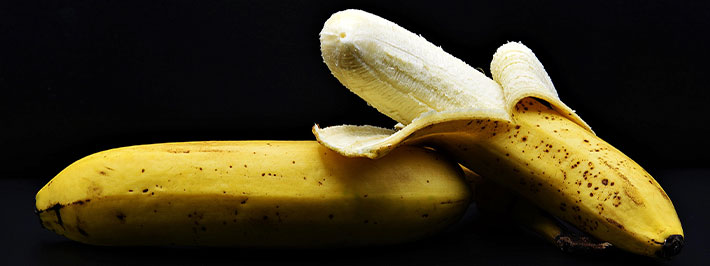
9 healthy ways to eat our favorite foods
There is a correlation between the colors of different vegetables and the health benefits they provide.
Red vegetables are famous for their antioxidant properties, while vegetables are known to promote good eye health, and yolks are often considered a source of protein. But how should we eat all of these foods to maximize their nutritional benefits?
1. Bananas
Bananas are a nutritional powerhouse, including vitamins B and C, as well as magnesium and potassium. And it is these fibrous strips between the banana and its skin that we should be grateful for. They are called 'phloem bundles' and they distribute water and nutrients throughout the fruit. They are also likely to contain many types of fiber and will make a great addition to your diet. So do not get rid of them!
2. Tomatoes
Boiling a tomato may sound blasphemous, but cooked tomatoes release more of a special cancer-fighting antioxidant, lycopene. This happens because the heat breaks down the hard cell walls of the fruit, making it easier for our body to absorb its nutrients. Simmering a tomato or making a cooked sauce will also do the trick.
3. Swiss chard, beets and turnips
You are absolutely right if you eat these vegetables for their leaves, but their stems are also edible. The cooked stems provide a dose of glutamine, a special acid that helps heal the body. They also taste delicious when blanched and sautéed in olive oil. So get the most out of your veggies by eating all of their parts and get a bigger vitamin boost.
4. Potatoes
Eating a potato with the skin provides more fiber, vitamins and minerals than without it. These include vitamin C, various B vitamins, iron, calcium, and potassium. All of this gives you energy, reduces stress, and benefits your bones and digestion. The best way to keep the skin edible is to bake the potato in the oven.
5. Apples and oranges
Eat these fruits with their skins! Apple peels contain an antioxidant, quercetin, which works wonders for the heart and brain. Orange peels, on the other hand, contain compounds called flavones, which lower cholesterol and protect the heart.
6. eggs
Although eggs become more digestible when cooked, high temperatures can damage some of their nutrients. For example, microwave-cooked, fried, and hard-boiled eggs contain fewer antioxidants and cholesterol is oxidized. Poached and soft-boiled eggs are the healthiest - they maximize protein intake and keep nutrients intact. These cooking methods do not add any extra calories, either.
7. Onion and garlic
Chopping the onion and garlic releases alliinase, an enzyme that helps produce a nutrient called allicin. Allicin, when consumed, helps create other compounds that protect us against disease. Additionally, onion and garlic contain sulfur, which works well with foods high in iron and zinc, such as poultry, beef, and liver.
8. Cereals and legumes
Compounds found naturally in grains and legumes can make them difficult to digest. When you soak beans and grains, you reduce the amount of these compounds, which makes the minerals they contain more available and digestion easier. It also helps you better absorb minerals like iron, calcium, and zinc, which are released from hot water. If you ever buy kidney beans, soak and boil them.
9. Green vegetables
Anything green should be eaten raw. Brussels sprouts, broccoli, avocado, spinach, and all other vegetables contain water-soluble nutrients that are sensitive to heat. High temperatures damage vitamin C, folate, and vitamins B1 and B5, so you get more when you eat these raw green foods. For example, raw spinach contains three times more vitamin C than cooked spinach. If you do not like raw broccoli, try simmering it without exposing it to too much water.